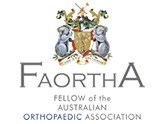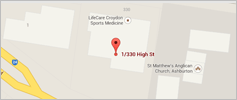
Revision Knee Replacement
Knee anatomy
The knee is made up of four bones. The femur or thighbone is the bone connecting the hip to the knee. The tibia or shinbone connects the knee to the ankle. The patella (kneecap) is the small bone in front of the knee and rides on the knee joint as the knee bends. The fibula is a shorter and thinner bone running parallel to the tibia on its outside. The joint acts like a hinge but with some rotation.
The knee is a synovial joint, which means it is lined by synovium. The synovium produces fluid lubricating and nourishing the inside of the joint. Articular cartilage is the smooth surfaces at the end of the femur and tibia. It is the damage to this surface which causes arthritis.
Why does a kneed to be revised?
- Pain is the primary reason for revision. Usually the cause is clear but not always. Those knees without an obvious cause for pain, in general, do not do as well after surgery.
- Plastic (polyethylene) wear .This is one of the easier revisions where only the plastic insert is changed.
- Instability which means the knee is not stable and may be giving way or not feel safe when you walk
- Loosening of either the femoral, tibial or patella component. This usually presents as pain but may be asymptomatic. It is for this reason why you must have your joint followed up for life as there can be changes on X-ray that indicate that the knee should be revised despite having any symptoms.
- Infection-usually presents as pain but may present as swelling or an acute fever.
- Osteolysis (bone loss). This can occur due to particles being released into the knee joint which result in bone being destroyed
- Stiffness-this is difficult to improve with revision but can be helped with the right indications.
Surgical procedure
It will be explained to you prior to surgery what is likely to be done but in revision surgery the unexpected can happen and good planning can prevent most potential problems. The surgery is often, but not always, more extensive than your previous surgery and the complications similar but more frequent than the first operation.
The surgery varies from a simple liner exchange to changing one or all of the components. Extra bone (cadaver bone) may need to be used to make up for any bone loss.
- The surgeon makes an incision in front of the knee exposing the knee joint.
- The knee cap along with its ligament may be moved to make room for the operation.
- The surgeon first concentrates on the thigh bone to remove the old femoral component.
- The surgeon removes the old femoral component.
- Sometimes the damaged bone will be cut.
- The femur is then prepared to take the new component. Sometimes the damaged bone may be removed.
- The femoral component is then fixed in place. Sometimes extra bone or a metal wedge may be used to make up for the lost bone.
- Occasionally cement may be used depending on surgeons’ preference.
- The surgeon then concentrates on the tibia to remove the tibial component along with the old plastic liner. The damaged bone is cut.
- The tibia is then prepared to take the new tibial component. The lost bone is then replaced either by a metal wedge or bone graft depending on surgeons’ preference.
- The new tibial component is fixed in place. Cement may be used to fix the component in place.
- A plastic liner is placed on the tibial component. Occasionally, the knee cap may also be prepared and resurfaced to receive a plastic component.
The femoral and the tibial component are fixed in place to form the new knee joint. The muscles and tendons are then approximated.
Drains are usually inserted to drain excessive blood.
Risks and Complications
- As with any major surgery there are potential risks involved. The decision to proceed with the surgery is made because the advantages of surgery outweigh the potential disadvantages.
- It is important that you are informed of these risks before the surgery takes place.
Complications can be medical (general) or local complications specific to the knee
Medical complications include those of the anaesthetic and your general wellbeing. Almost any medical condition can occur so this list is not complete. Complications include
- Allergic reactions to medications
- Blood loss requiring transfusion with its low risk of disease transmission
- Heart attacks, strokes, kidney failure, pneumonia, bladder infections
- Complications from nerve blocks such as infection or nerve damage
- Serious medical problems can lead to ongoing health concerns, prolonged hospitalization or rarely death.
Local complications
- Stiffness in the knee.
Ideally your knee should bend beyond 100 degrees but on occasion the knee may not bend as well as expected. Sometimes manipulations are required. This means going to theatre and under anaesthetic the knee is bent for you.
- Wound irritation or breakdown.
The operation will always cut some skin nerves, so you will inevitably have some numbness around the wound. This does not affect the function of your joint. You can also get some aching around the scar. Vitamin E cream and massaging can help reduce this.
Occasionally you can get reactions to the sutures or a wound breakdown which may require antibiotics or rarely further surgery.
- Infection
Infection can occur with any operation. In the knee this can be superficial or deep. Infection rates are approximately 1%. If it occurs it can be treated with antibiotics but may require further surgery. Very rarely your knee prosthesis may need to be removed to eradicate the infection.
- Blood clots (Deep Venous Thrombosis)
These can form in the calf muscles and can travel to the lung (Pulmonary embolism). These can occasionally be serious and even life threatening. If you get calf pain or shortness of breath at any stage, you should notify your surgeon.
- Damage to nerves or blood vessels
Also rare but can lead to weakness and loss of sensation in part of the leg. Damage to blood vessels may require further surgery if bleeding is ongoing.
- Wear
The plastic liner eventually wears out over time, usually 10 to 15 years, and may need to be changed.
- Cosmetic Appearance
The knee may look different than it was because it is put into the correct alignment to allow proper function.
- Dislocation
An extremely rare condition where the ends of the knee joint lose contact with each other or the plastic insert can lose contact with the tibia (shinbone) or the femur (thigh bone).
- Patella problems
Patella (knee cap) can dislocate. That is, it moves out of place and can break or loosen.
- Ligament injuries
There are a number of ligaments surrounding the knee. These ligaments can be torn during surgery or break or stretch out any time afterwards. Surgery may be required to correct this problem.
- Fractures or breaks in the bone can occur during surgery or afterwards if you fall. To fix these, you may require surgery.












